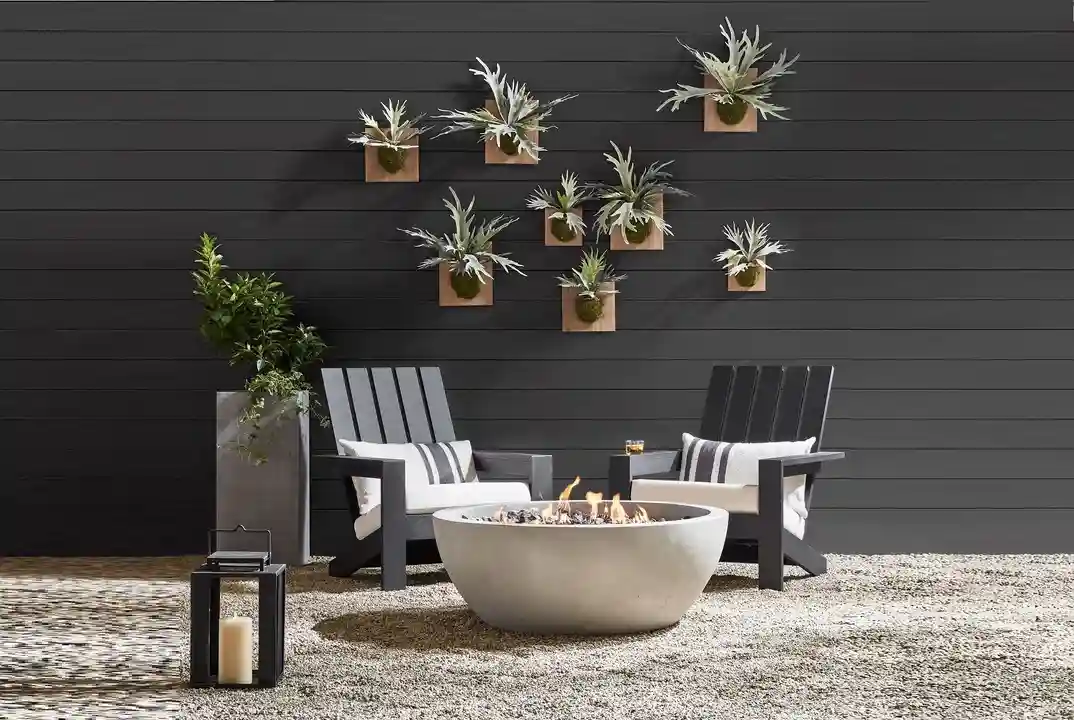Mounting staghorn and elkhorn ferns can be a gratifying endeavor, providing an opportunity to display these epiphytic plants in a unique and aesthetically pleasing manner. These ferns, known for their ability to derive nutrients and water from the air, can be securely mounted on walls in bathrooms or shaded outdoor spaces.
This article serves as a simple guide, outlining the necessary materials and tools, as well as the step-by-step process involved in mounting these ferns. Beginning with the preparation of the mounting board, the article explains how to attach the ferns securely and ensure their stability. Additionally, it provides detailed instructions for securing the wires and hanging the ferns with the use of hooks and chains.
By following this informative guide, individuals can successfully mount staghorn and elkhorn ferns, creating an eye-catching display while providing the ferns with a suitable environment for growth and development.
Key Takeaways
- Staghorn and elkhorn ferns are epiphytes that draw nutrients and water from the air.
- Wall-mounted staghorns and elkhorns are suitable for bathrooms and shaded outdoor spaces.
- Elkhorn ferns produce pups, while staghorns must be propagated from spores.
- The method for mounting ferns involves using horizontal slats, vertical battens, galvanized hooks, and galvanized chain.

Materials and Tools
The materials and tools required for mounting staghorn and elkhorn ferns include:
- Horizontal slats
- Vertical battens
- Galvanized hooks
- Galvanized chain
- PVC-coated tie wire
- Galvanized screws
- Galvanized staples
- A pruning saw
- A hammer
- A drill
- Secateurs
- A straightedge or ruler
- A bucket
- A tape measure
- Sphagnum moss
When choosing the materials, it is important to select sturdy and weather-resistant options such as galvanized hooks and chain to ensure the longevity of the mount. PVC-coated tie wire can be used to secure the fern to the mount without causing damage. It is also essential to have the necessary tools such as a pruning saw, hammer, drill, and secateurs for the mounting process.
Additionally, using sphagnum moss to fill gaps between the board and the plant can help retain moisture and promote healthy growth.
By utilizing these materials and tools, individuals can successfully mount staghorn and elkhorn ferns while ensuring their health and longevity.
Preparing the Mounting Board
To prepare the board for mounting staghorn and elkhorn ferns, horizontal slats are placed on top of vertical battens. It is important to choose the right mounting board that is sturdy and able to support the weight of the ferns. The board should be made of a durable material such as wood or plastic.
Once the board is selected, the next step is to soak sphagnum moss in water. Soaking the moss helps to retain moisture and provides a suitable environment for the ferns. The moss will be used to fill any gaps between the board and the plants, ensuring that they have access to the necessary moisture.
By properly preparing the mounting board and soaking the sphagnum moss, the stage is set for successfully mounting staghorn and elkhorn ferns.
[youtube width=630 height=350]ocv-2Y1bKmw[/youtube]
Attaching the Fern
After preparing the mounting board and soaking the sphagnum moss, the next step involves securely attaching the fern to the board.
This process requires careful positioning of the fern on the board, with the central rosette or small rosettes facing upwards. The fern should be centered on the board for aesthetic balance. Once in position, galvanized screws are used to secure the fern to the board, ensuring that it is held firmly in place.
It is important to avoid over-tightening the screws, as this can damage the fern. After attaching the fern, any dead or browning parts of the plant can be trimmed off to maintain its health and appearance.
Caring for mounted ferns involves regular misting to provide moisture and maintaining a suitable environment with indirect light and moderate humidity.
Securing the Wires
Securing the wires involves inserting them through the pre-drilled holes on the middle slats of the mounting board and tying them at the back to ensure the fern is securely attached.
To prevent wire damage and ensure the longevity of the mount, it is important to use proper wire knotting techniques. One commonly used technique is the twist knot, where the wire is looped around itself multiple times and twisted tightly to create a secure hold. Another technique is the figure-eight knot, where the wire is crossed over itself and then looped under and through the bottom loop, creating a knot that is less likely to slip.
Whichever technique is chosen, it is crucial to make sure the wires are pulled taut and securely fastened to the back of the board to prevent the fern from becoming unstable or falling off.
Hanging the Fern
Hanging the fern involves attaching galvanized hooks to the vertical battens and securing a chain for suspension. Once the fern has been securely mounted on the board, it is important to choose the right location for hanging.
Staghorn and elkhorn ferns thrive in shaded outdoor areas or bathrooms where they can receive indirect sunlight. Direct sunlight can scorch their delicate fronds, so it is crucial to find a spot that provides the right amount of light.
Additionally, maintaining optimal humidity is essential for the health of these ferns. They naturally draw moisture from the air, so it is important to mist them regularly or place them in a location with high humidity. This can be achieved by hanging them in a bathroom or near a humidifier. By considering these factors, the ferns can thrive and bring a touch of natural beauty to any space.
| Factors to Consider |
|---|
| Location |
| Light |
| Humidity |
| Mist regularly |
| Bathroom or humidifier |
Frequently Asked Questions
How often should I water my staghorn or elkhorn fern?
Staghorn and elkhorn ferns should be watered when the top layer of soil feels dry to the touch. Overwatering can lead to root rot, wilting, and yellowing fronds. Monitor the plant’s moisture needs and adjust watering frequency accordingly.
Can I mount my fern on a different type of board, such as a piece of driftwood or a wooden plaque?
Driftwood mounting alternatives can be used as creative mounting materials for staghorn and elkhorn ferns. Other options include wooden plaques and branches. These materials provide a natural and unique aesthetic for displaying the ferns.
What is the best location for hanging a staghorn or elkhorn fern?
The best location for hanging a staghorn or elkhorn fern is in a bathroom or shaded outdoor space. Common mistakes to avoid when mounting these ferns include using unsuitable materials and neglecting to provide proper moisture and nutrients. Best ways to care for them include regular misting, providing indirect light, and using a well-draining potting mix.
Can I use a different type of moss instead of sphagnum moss to fill the gaps between the board and the plant?
Different types of moss can be used as an alternative to sphagnum moss for filling the gaps between the board and the plant when mounting ferns. Some options include peat moss, Spanish moss, and sheet moss.
Can I mount multiple ferns on the same board?
Mounting multiple ferns on the same board has advantages such as creating a visually striking display and maximizing space utilization. Different techniques for mounting include spacing the ferns evenly or staggering them for a more natural look.
Conclusion
Mounting staghorn and elkhorn ferns is a straightforward and rewarding process. By following the steps outlined in this guide, one can create a beautiful display of these unique epiphytic plants in their bathroom or shaded outdoor space.
With the necessary materials and tools, such as slats, battens, hooks, and chain, and by carefully attaching the ferns to the mounting board using wires and staples, one can ensure the proper placement and security of the plants.
Finally, by hanging the ferns with hooks and a chain, the desired aesthetic can be achieved.













Comments are closed.